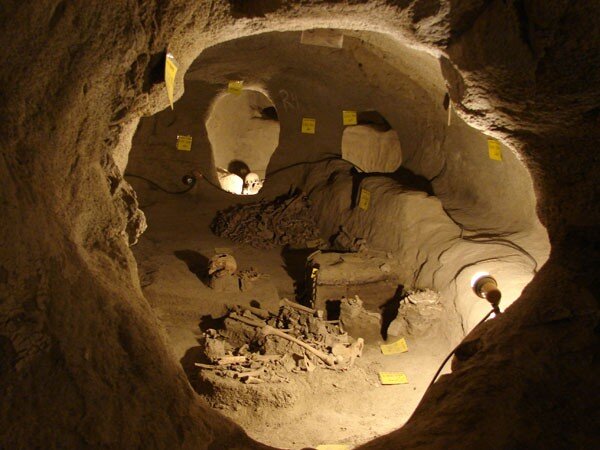Underground city visits permitted with safety precautions

TEHRAN – Visits to the underground city of Samen in Malayer, Hamedan province are permitted as long as safety measures are followed, the deputy provincial tourism chief has said.
Samen is currently accessible in a small number and with coordination, and during the visit, all safety points are observed, Ali Khaksar explained on Tuesday.
The safety issues raised by the tourism minister Ezzatollah Zarghami in December when he inaugurated the underground city are being addressed and implemented, the official added.
Back in December, the official announced that a budget of 25 billion rials ($62,500) was spent on the excavation, restoration, protection, and preparation of the ancient troglodytic settlement, which dates back to the Parthian era (247 BC – 224 CE).
A unique complex with human skeletons and granite stone structures, the underground city of Samen has been prepared for a public visit in this phase with two workshops and 30 rooms, Khaksar added.
Since 2007, the excavations of Samen have been going on continuously, and until 2015, six seasons of archaeological surveys have been conducted, he mentioned.
To date, the necessary restorations and protection plans have been completed on this valuable structure, he noted.
Since the human skeletons discovered in this underground city were severely eroded, with the help of cultural heritage experts and restorers, a study and documentation of the skeletons and bones were carried out in their place, he explained.
The skeletons then were moved to the province’s cultural heritage department and will be returned to the underground city after preparation and full restoration, he said.
Samen subterranean settlement has 25 rock-carved rooms, interlinked tunnels, and corridors.
The subterranean complex appears to have been first used for religious purposes, then as a cemetery, and finally as a shelter during emergencies.
The underground complex, located 400 km west of Tehran, is believed to be built sometime between the fall of the Achaemenid Empire (550-330 BC) and the early Parthian era (247 BC-224 CE).
Excavations at the site began in 2005 and were still going on. So far, tens of well-preserved skeletons have been retrieved from its interconnected chambers.
Iran is a haven for ancient troglodytic architecture which is somewhat forgotten, though they are filled with life and creativity. The northwest Kandovan village is one of the most famous examples of troglodytic architecture in the country; its ice-cream cone-shaped homes resemble that of Turkey’s Cappadocia.
Known in classical times as Ecbatana, Hamedan was one of the ancient world’s greatest cities. Pitifully little remains from antiquity, but significant parts of the city center are given over to excavations. Ecbatana was the capital of Media and subsequently a summer residence of the Achaemenian kings who ruled Persia from 553 to 330 BC.
Hamedan has had many names: it was possibly the Bit Daiukki of the Assyrians, Hangmatana, or Agbatana, to the Medes, and Ecbatana to the Greeks. One of the Median capitals, under Cyrus II (the Great; died 529 BC) and later Achaemenian rulers, it was the site of a royal summer palace.
About 1220 Hamedan was destroyed by the Mongols. In 1386 it was sacked by Timur (Tamerlane), a Turkic conqueror, and the inhabitants were massacred. It was partly restored in the 17th century and subsequently changed hands often between Iranian ruling houses and the Ottomans.
Sitting on a high plain, Hamedan is graciously cool in August but snow prone and freezing from December to March. In summer, the air is often hazy.
Ali Sadr cave, Ganjnameh inscriptions, Avicenna Mausoleum, Hegmataneh hill, Alaviyan dome, Jameh mosque, and St. Stephanos Gregorian Church are amongst Hamedan’s attractions to name a few.
ABU/
